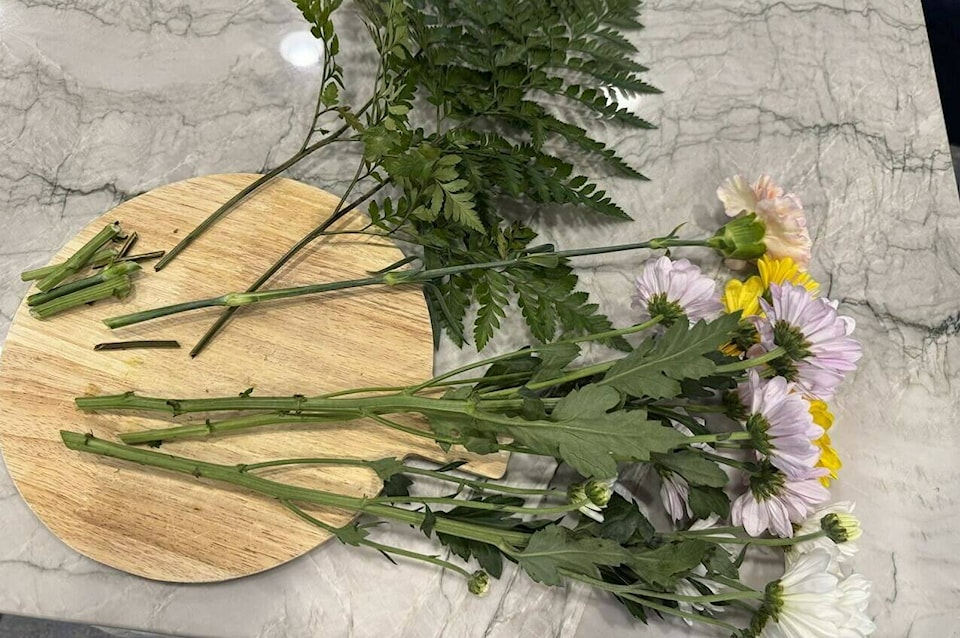There’s nothing quite like receiving a fresh bouquet of cut flowers. They can cheer up a room, bring a bit of nature indoors and, if you’re lucky, release a heavenly fragrance.
But nothing kills that vibe quicker than stinky, slimy, wilted flowers poking out of a vase full of brown water.
Bacteria is one of the main causes of premature bouquet deaths. Its presence in vase water clogs stems and speeds up decay. Dehydration, either from a lack of water or a stem’s inability to absorb it, results in wilting. And exposure to ethylene gas exuded by neighboring decaying flowers or ripening fruit hastens aging.
But with proper preparation and care, you can greatly increase the lifespan of your bouquets.
First, I’d like to put an end to some bad advice that’s been floating around: Despite what you might have read, smashing the cut ends of flower stems does not increase water uptake. In fact, it would destroy a portion of the stems’ vascular system, responsible for transporting water through the stem. It would also expose fresh plant tissue to water, which accelerates rotting. Don’t do it.
If you are , do so in the morning when stems are the most hydrated, then immediately place them into a container of water.
Regardless of whether your bouquets are picked or purchased, these tips will greatly improve their longevity.
1. Always start with a clean vase.
2. Remove any leaves that land below the container’s water line, or they will introduce bacteria as they rot.
3. Using a clean, sharp knife or garden pruners, trim 1-2 inches off the bottom of each stem at a 45-degree angle. This will maximize the surface area, allowing flowers to take up more water and preventing blockages that can result when stems lay flat against container bottoms. For woody stems, scrape a bit of bark away from the sides of angled cuts.
4. Add flower food. The little packet that comes with your bouquet contains sugar, citric acid and bleach, which lower the water’s pH and inhibit bacterial growth. Follow the dosing instructions on the packet; using too much can burn foliage and shorten the life of your flowers.
5. Add ¼ cup of sugar-sweetened citrus soda or a tablespoon of vodka (or other clear spirit) as a booster. Soda helps keep water acidic and feeds flowers; vodka inhibits spoilage.
6. Keep flowers away from drafts, such as open windows, ceiling fans, forced-air heaters or air conditioning units, out of direct sunlight and away from fruit, which releases ethylene gas as it ripens.
7. Wash the vase, remove fading flowers and leaves, trim another one-quarter to one-half inch off stem bottoms and replace flower food and booster every other day.
8. There’s a reason florists store flowers in a refrigerated case. Just as it does food, refrigeration keeps flowers fresher longer. Tuck your bouquet into the fridge every night to slow the aging process.
READ ALSO:



